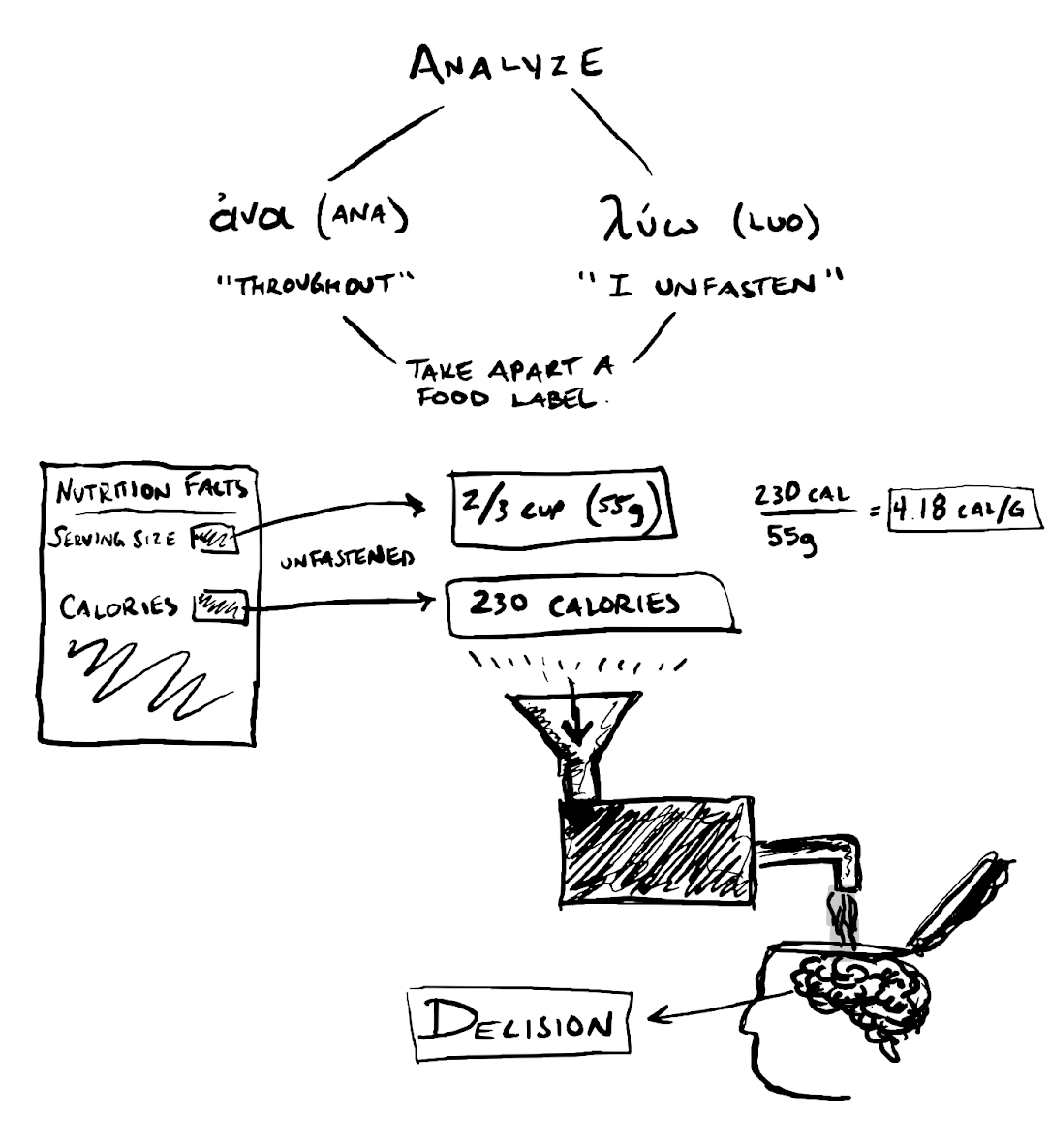Nutrition Facts can help you determine how you’ll eat a particular food.
It’s tempting to call an essay on Nutrition Facts “practical” and an essay on the definition of eating well “impractical” or “theoretical.” But isn’t all knowledge practical? There's a difference between knowing how to get somewhere and knowing why it’s good to get there. Both are practical.

In most places, we are surrounded by Nutrition Facts. If you live in the United States, you’ll be familiar with this design:

Nutrition Facts are displays of data. They are piles of wood waiting to be a part of a greater structure. We have to interpret them and make sense of them through some sort of analysis.

Analysis leads to decisions. The purpose of analyzing Nutrition Facts is to digest the information and build a decision about how we should eat a particular food. Maybe we won't eat it all, maybe we'll eat a little of it, maybe we'll eat a lot of it. Information forms a choice and that choice is directed towards bringing about our wellbeing. If we don’t pay attention, a choice will still be formed, but it might aim at the wrong thing.